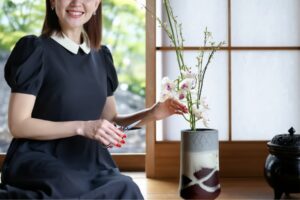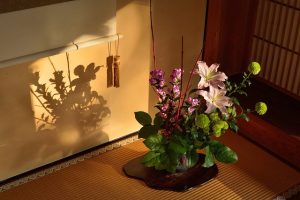When you start learning ikebana, you may notice that each class has its own style. The three major schools of ikebana are Ikenobo, Ohara-ryu, and Sogetsu-ryu, and each of them originated in different periods. Ikebana is a traditional Japanese art form. Who started this culture, and when? This article will introduce the history of ikebana, including when and how the three major schools (Ikenobo, Ohara-ryu, and Sogetsu-ryu) emerged, and explain the differences between ikebana and Western-style flower arrangements.
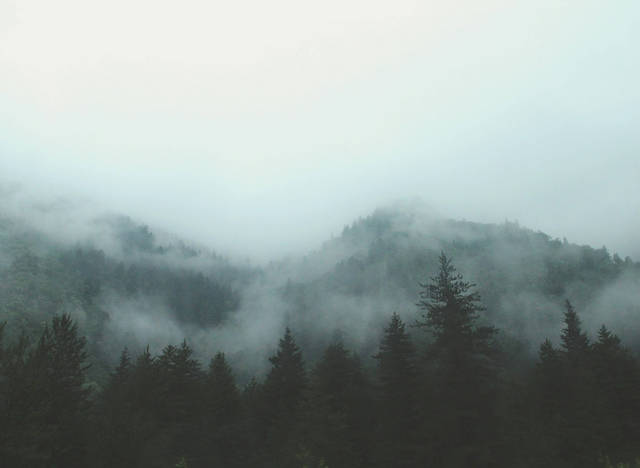
Ancient Times
■Relationship Between the Japanese and Plants
In the lush, evergreen landscapes of Japan, ancient people believed that divinity resided in various natural elements, including plants, water, and the sun. The concept of “eight million gods” reflects this belief. Many evergreen trees like oak and camphor thrive year-round, and the shiny leaves of broadleaf evergreens like chinquapin and camellia were thought to reflect the divine. This reverence for nature is unique to the Japanese spirit and contrasts with Western attitudes, which viewed deciduous trees as objects rather than entities of spiritual significance.
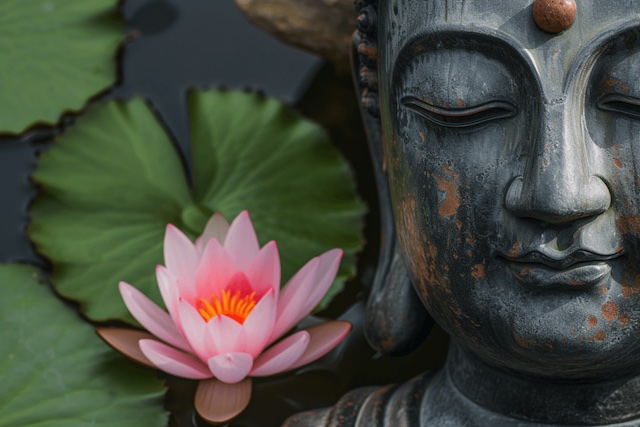
Nara Period
■The Introduction of Buddhism and the Birth of Offering Flowers
When Buddhism was introduced from China during the Nara period, the concept of offering flowers (“kue” or “kuga”) to Buddhist statues also arrived in Japan. This tradition continues today, where flowers are offered at funerals and farewell ceremonies. The concept originated in India, where lotus flowers were offered. As Buddhism spread to China and Japan, the type of flowers offered became more varied.
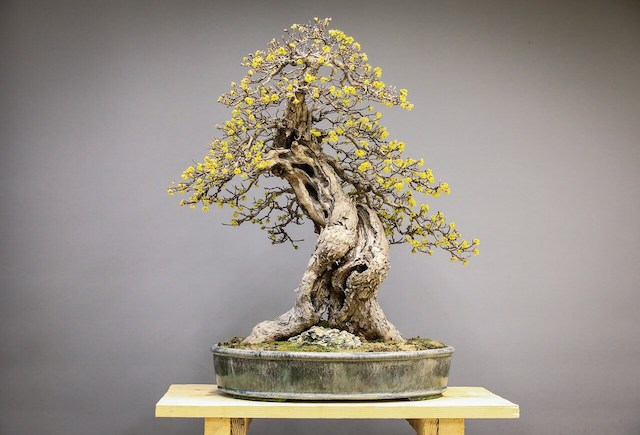
Heian to Kamakura Periods
■People Who Appreciate Flowers and Plants
The custom of arranging flowers in Japan has a long history. In “The Pillow Book,” written in the Heian period, there are mentions of flowers placed in outdoor vases for people to admire. In the Kamakura period, aristocrats created recreations of garden plants in potted arrangements as a playful pastime called “flower matching” or “plant matching.” These activities laid the foundation for later developments in ikebana.
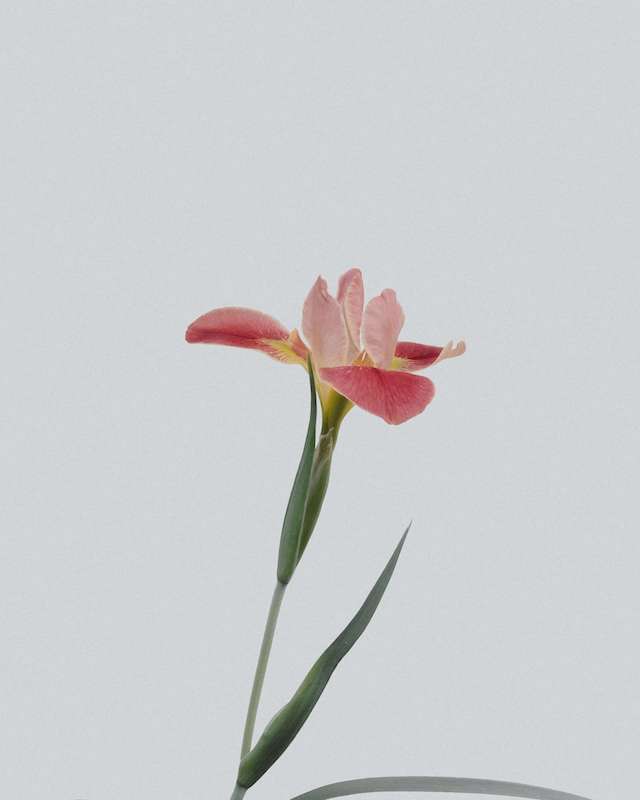
Muromachi Period
■The Birth of Ikebana
As Chinese paintings and artifacts were imported in the Kamakura period, they were regarded as exotic. At the same time, the architectural style of samurai residences known as “shoin-zukuri” emerged, which divided rooms with sliding doors. This further influenced the development of ikebana.
In 1462, Ikenobo Senkei, a monk at Kyoto’s Rokkakudo Temple, arranged flowers for a samurai, and this gained significant acclaim. His arrangements transcended the conventional flower offerings for the Buddha and became known as the origin of “ikebana” in Japan. This event marked the birth of the Ikenobo school.
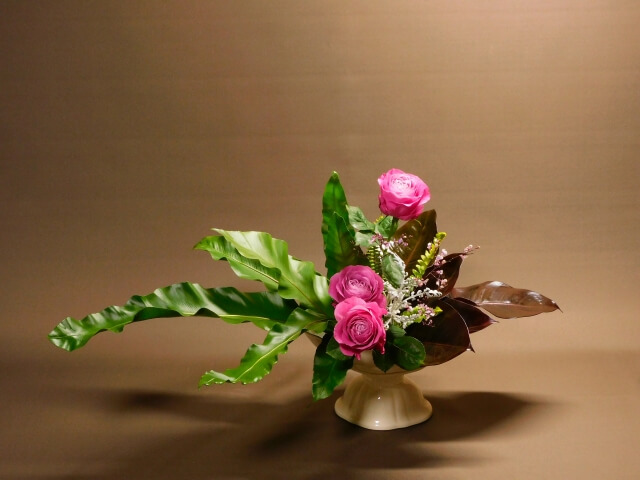
Edo Period
■The Emergence of Various Schools
Ikebana evolved into various styles during the Edo period, and several instructional books were written. The tea flower culture, which began in the Muromachi period, also spread among the common people, and the horticultural field saw the development of new plant species. The practice of ikebana was vibrant and widespread during this time.
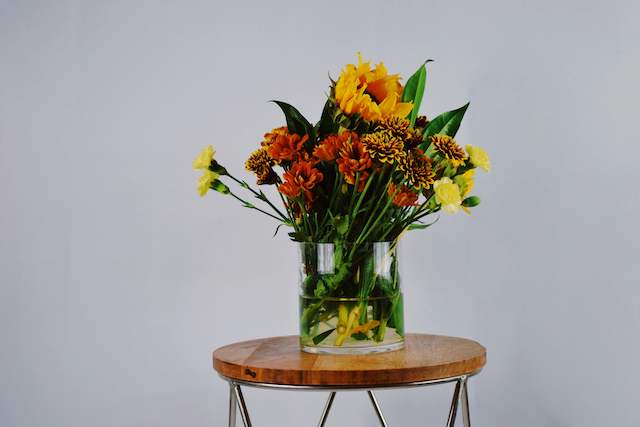
Modern Era
■Western Influence
Ikebana culture declined in Tokyo after the Meiji period. During the Meiji period, there were two distinct styles: free-spirited “bunjin-bana” and technically proficient “Enshu-ha.” Western-style flower arrangement also influenced bunjin-bana, bringing new ideas about natural beauty.
By the Meiji 40s (around 1907), new plants were imported as Japan underwent Westernization. The first bouquet guidebook was published, and Western-style floral decorations began to influence ikebana. Ikenobo adopted new styles such as “moribana” and “nageire.”
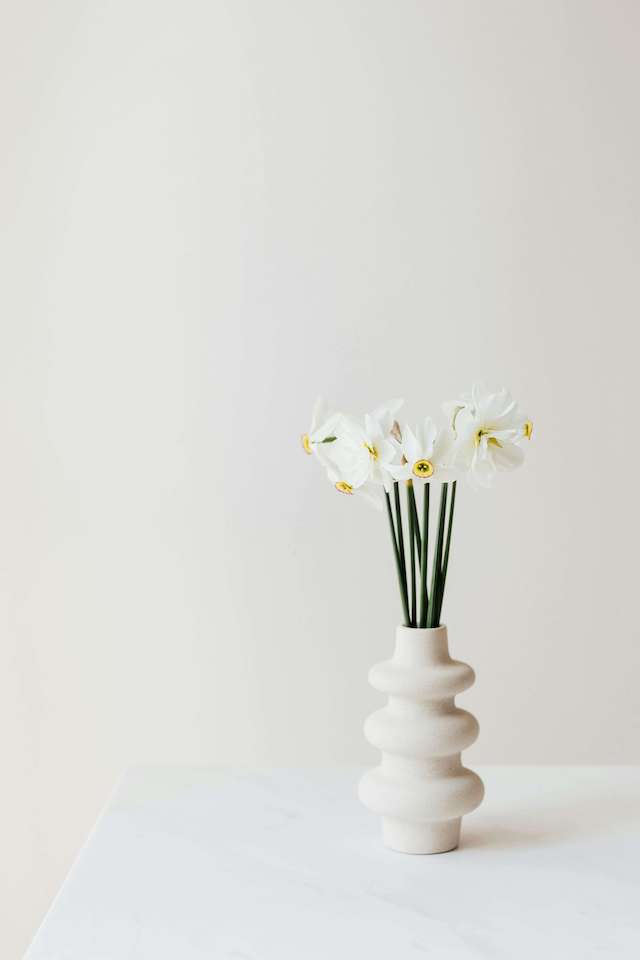
Showa Era Onward
■The Advent of Free-form Arrangement and the Third Major School
In the Showa era, “free flower” arrangements emerged, featuring no fixed style. The Sogetsu school, rich in artistic expression, was born and became the third major school alongside Ikenobo and Ohara-ryu.
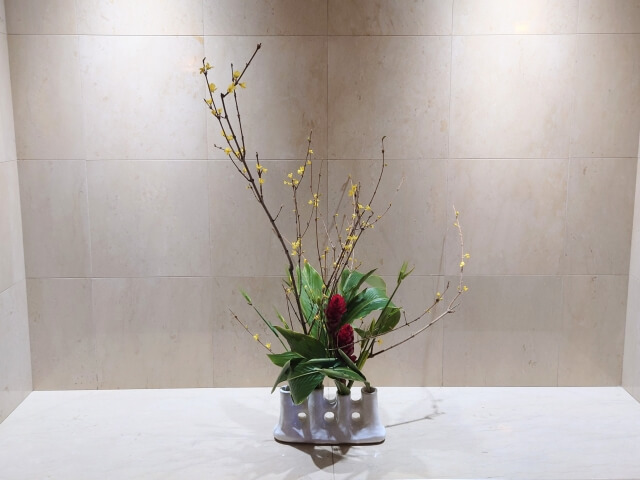
Contemporary Era
Currently, there are over 100 recognized ikebana schools, with some estimates reaching over 1,000. Ikebana and Western flower arrangements are now both popular. Western-style flower arrangement began as home decoration in ancient Rome and was further developed in Renaissance Italy. Unlike ikebana, which reveres plants and often serves as an offering, Western-style floral decoration is focused on beautifying the home.
I hope this overview has given you a deeper appreciation for the history and significance of ikebana in Japanese culture. Though arranging flowers might initially seem challenging, understanding the spiritual concept that “plants also have a divine presence” can bring excitement to the art of ikebana.
